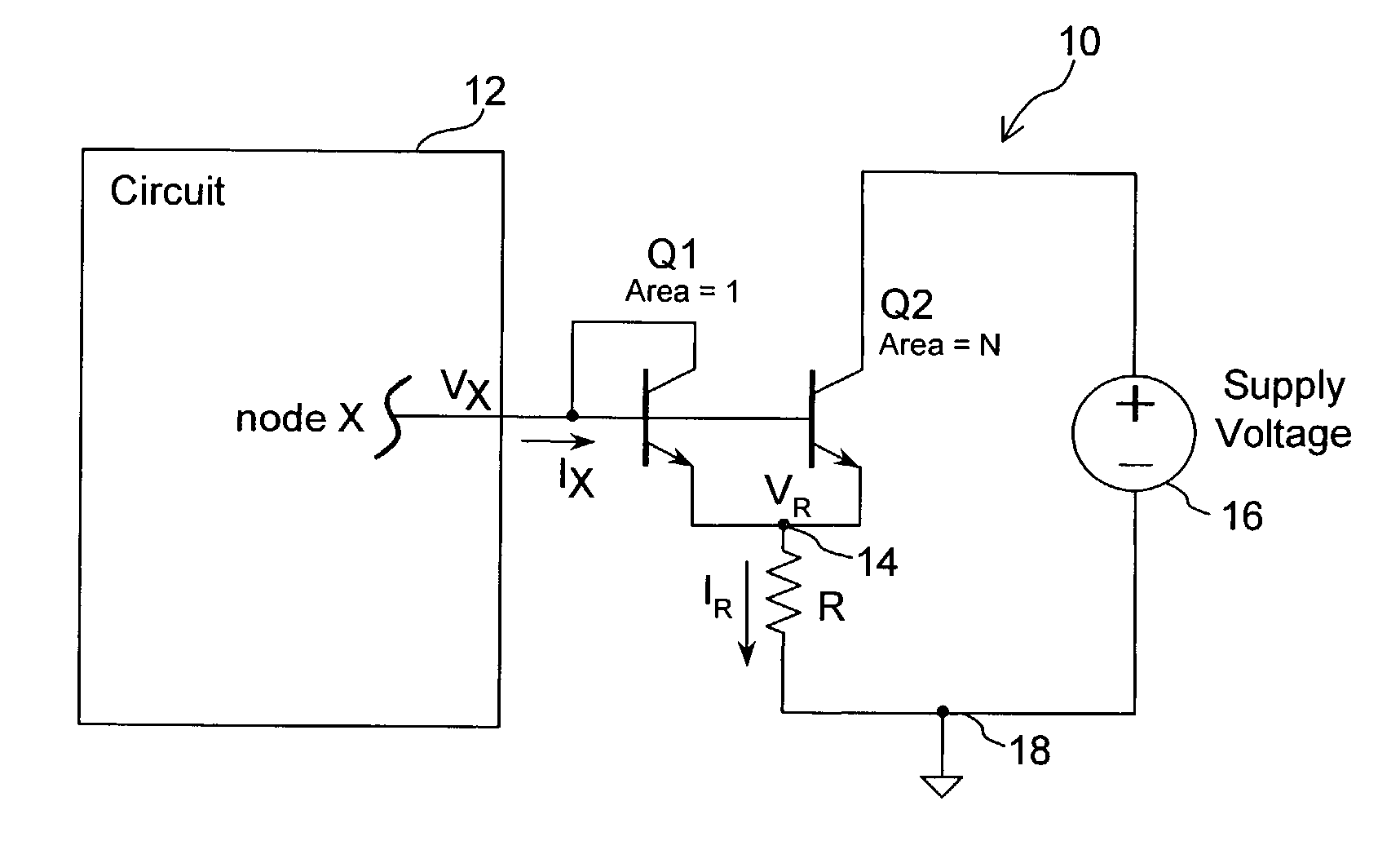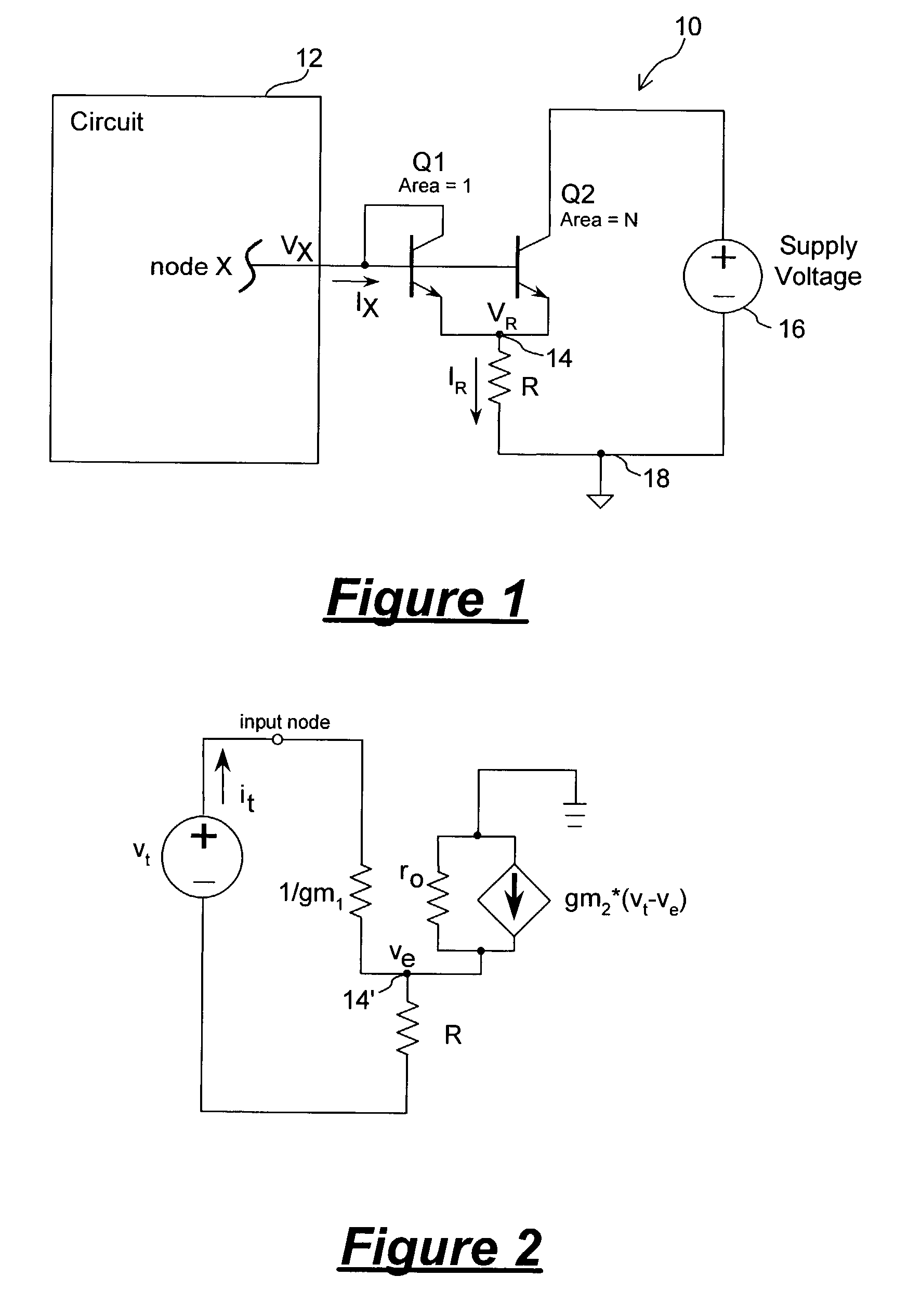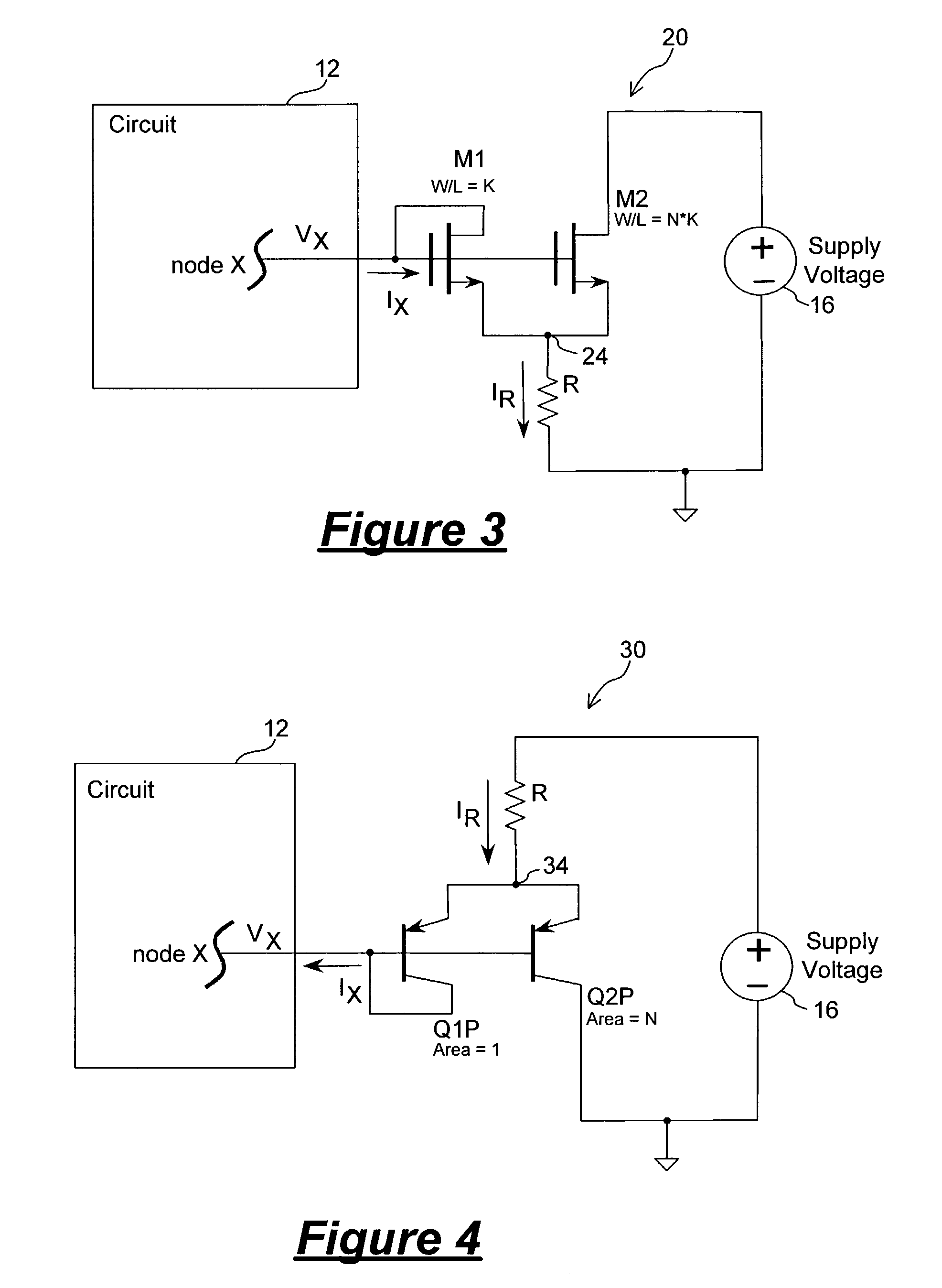Resistance multiplier circuit and compact gain attenuator
a technology of resistive multiplier circuit and compact gain attenuator, which is applied in the direction of one-port active network, multiple-port active network, ac network voltage adjustment, etc., and can solve the problems of high-value resistances that are difficult to achiev
- Summary
- Abstract
- Description
- Claims
- Application Information
AI Technical Summary
Benefits of technology
Problems solved by technology
Method used
Image
Examples
Embodiment Construction
[0017]In accordance with the principles of the present invention, a circuit for providing a high-value resistance to a first node uses active circuitry to multiply the resistance value of a resistor. In this manner, a high-value resistance can be provided in an integrated circuit by using a comparatively small structure. In one embodiment, the resistance multiplier circuit includes a pair of unevenly sized transistors coupled to the first node and to a resistor. The transistors are configured as a current mirror for drawing currents through the resistor. By discarding part of the current drawn, the resistance value as seen from the first node can be made larger than actual resistance of the resistor itself. The geometric ratio of the pair of transistors establishes the amount of resistance multiplication that can be realized.
[0018]The resistance multiplier circuit of the present invention offers many advantages. First, the resistance multipler circuit including two transistors requi...
PUM
 Login to View More
Login to View More Abstract
Description
Claims
Application Information
 Login to View More
Login to View More - R&D
- Intellectual Property
- Life Sciences
- Materials
- Tech Scout
- Unparalleled Data Quality
- Higher Quality Content
- 60% Fewer Hallucinations
Browse by: Latest US Patents, China's latest patents, Technical Efficacy Thesaurus, Application Domain, Technology Topic, Popular Technical Reports.
© 2025 PatSnap. All rights reserved.Legal|Privacy policy|Modern Slavery Act Transparency Statement|Sitemap|About US| Contact US: help@patsnap.com



